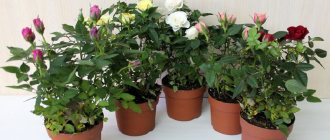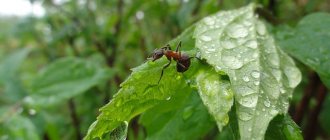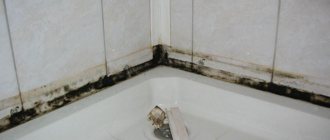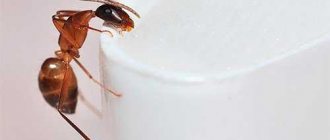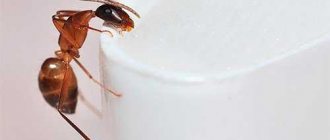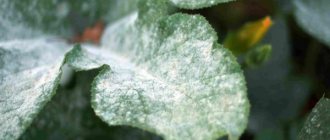White mold (Mucor)
Mold fungi grow and multiply on the surface of the soil, food products, and organic waste.
Some Mucor species are capable of causing human disease. And some species are used to produce antibiotics.
White mold on the soil in a pot does not bring any benefit; on the contrary, it can be dangerous. In appearance, it resembles white fluff, gradually filling the soil surface. To the touch, the structure is soft, easily crushed with your fingers.
It negatively affects the well-being of people and plants. Mucor will not cause any significant harm to most healthy people. But during sporulation, microscopic fungal spores entering the respiratory tract can cause an allergic reaction.
It is not so much the mold itself that harms a house plant, but the conditions under which it develops. It appeared because the rules for keeping flowers were violated.
Favorable conditions for spore germination, such as high humidity at low temperatures, heavy soils, negatively affect the development of crops. Therefore, the appearance of Mucor is not the cause of the depressed state of the plant, but a result that signals a deterioration in conditions.
Methods of disposal
In order to eliminate fungus in flower pots, the following measures must be taken:
- Replace the top layer of soil, approximately 2 - 3 cm deep, with fresh soil of a lighter structure.
- Reduce the number of waterings.
- Prevent water stagnation.
- Provide drainage.
- Loosening will saturate the soil with oxygen.
- Antifungal drugs - fungicides. For medicinal as well as preventive purposes, the ground is periodically watered with a solution of Fitosporin. It is absolutely safe, as it is a remedy for mold of biological origin.
Transplanting a plant
The most effective way to combat infection is to replant the crop. This procedure helps not only get rid of mold, but also eliminate other problems, as well as provide the plant with nutrients, because it has managed to pull out all the minerals from the old soil.
See also Fungus and mold of strawberries
The substrate for transplantation must be selected taking into account all the rules and requirements for a particular flower. It is important to ensure good drainage. To do this, charcoal, broken polystyrene foam or small pebbles are placed at the very bottom of the pots.
After removing the contaminated soil composition, it is recommended to wash and disinfect the pot. The permissible moisture level should also be clarified in advance for a specific crop and not exceed it.
Soluble salts - efflorescence
Any water used for irrigation contains soluble salts. Their concentration varies: hard or well water contains a large amount of salts. The smallest amount of elements contains rain, melt, and so-called “soft” water. Depending on the microelements present, the color of the efflorescence will differ: calcium salts will give a white tint, and if there is an excess of iron, the soil on top will be yellow or brown.
This phenomenon most often affects heavy soils with poor drainage and frequent surface watering. When water does not completely wet the earthen ball, soluble salts do not reach the roots well and linger on the surface.
Overly fertilized soil can also cause efflorescence. If microelements do not have time to be absorbed by the flower, they begin to come to the surface.
How to deal with salt deposits
In order to get rid of plaque, eliminate the cause of its appearance:
- Carefully replace the top layer of soil.
- If possible, use soft water: rain or tap water, well settled.
- Reduce the frequency of watering by increasing the volume of liquid so that the earthen ball is completely saturated.
- Ensure good drainage and clear clogged drainage holes.
- Regularly loosen the top layer of soil.
How to distinguish mold from efflorescence
The fungus protrudes a few millimeters above the soil surface, its structure is soft, delicate, and can be easily rubbed between the fingers.
Efflorescence resembles a thin coating that is difficult to separate from the soil and feels rough to the touch.
How to soften water for watering flowers
The easiest way is to collect rainwater. But this option is not suitable for industrial areas, since raindrops will collect dust and chemical elements in the air.
- Use well-settled water. For watering, take the top layer, excluding shaking.
- Filtered water. There are special filters for hard water that soften it by retaining calcium salts.
- Melt water. Take regular tap water out into the cold or place it in the freezer. Liquid without salts freezes earlier; complete freezing should not be allowed. Then the unfrozen water is drained and the ice is defrosted. The water prepared in this way will be soft and biologically active – “alive”.
- It is good to use aquarium water for watering. But provided that no drugs or other additives were added to it.
Why is mold in a flower pot dangerous?
Plant roots suffer from mold.
Each of the above types of mold is dangerous in its own way, so at the first signs of its appearance, the necessary measures should be taken. The prolonged presence of various stains and deposits on the soil can lead to the following problems:
- disruption of air circulation in the soil;
- the composition of the soil changes and becomes unsuitable for plants;
- the root system weakens and begins to rot;
- the green parts of the plant gradually fade, dry out and turn yellow.
Folk methods of dealing with various raids
Folk remedies involve the use of safe methods:
- Replanting the plant or replacing the top layer of soil.
- Using a weak solution of potassium permanganate. This method is effective only against mold, since potassium permanganate has fungicidal (antifungal) properties.
All types of molds, efflorescence, moss, appear on dense, poorly drained soils. Improving the soil structure, loosening, and regulated watering will help prevent this problem.
How to get rid of mold
First of all, if mold and the smell of rot appear, then you should reduce the frequency of watering. For some indoor plants, keeping the soil moist is enough. In general, it’s worth reading about the plant that you have in the pot and finding out how to properly care for it.
If you water abundantly, but rarely, be sure to loosen the soil deeply. Just be careful not to damage the roots.
If you suddenly find mold on the soil in pots, you should do the following:
- We remove the outer layer of soil, the faster the better. We remove as much as the plant's roots allow.
- We moisten the soil with a solution of citric acid. The acidic environment prevents the fungus from spreading. Take 1/2 teaspoon per glass.
- We replace the removed layer of soil with a new one and add bactericidal substances, which will play the role of a filter element for water. Usually crushed sphagnum moss and charcoal are added. You can crush activated carbon tablets.
- And then it is watered with a special antifungal drug. If there is a fungus on the plant, we treat it too. Fundazol is often recommended. Just be careful, it is toxic to humans, and if the proportions are not chosen correctly, then the plant will suffer.
Don’t forget to loosen the soil in the flower more often, and also water the soil with a solution of citric acid at least twice a month. All this after completing all the points above.
Among other things, replanting the plant in new soil helps. At the same time, the plant itself must be healthy. Or treat the plant itself.
It is not uncommon for the soil to be disinfected, but there you have to fry the soil in the oven, and this creates such a smell throughout the apartment that...
I advise you not to do this, but simply buy new primer in the store, but then you should do the following:
- Separate the roots of the plant from the soil.
- Treat the roots with a special compound; the store will tell you to use something or a solution of citric acid.
- Rinse the pot itself well and also treat it with a special composition. And if it is possible and the pot itself allows it, treat it with high temperatures.
- Be sure to make a good drainage system: the pot should have holes of the required diameter, and expanded clay or granite chips should be poured into the bottom of the pot.
- We pour new soil according to all the rules and water it with agents that prevent the growth of fungi.
Remember that fungal spores are in the air. Therefore, if you have replaced the soil or replanted a flower, then it is worth cultivating the soil for a while until the air in the apartment and all the dust in the premises are replaced. You can do general cleaning... several times)))
You can also get rid of mold using chemicals, which are available in a wide variety of types in flower shops.
First of all, you need to take into account several factors:
- type of soil;
- plant characteristics;
- degree of soil and flower damage;
- what fertilizers were used for the flower.
It is best to use organic products that penetrate deep into the soil and prevent the fungus from spreading.
Mode of application
Fungicides can be applied in three different ways.
The first is seed treatment before planting. This is done either using dry powder or a solution of fungicide in water.
The second method is spraying adult plants. In this case, treatment is carried out with a fungicide solution, usually this is done in spring and autumn (as a preventative measure), and also when the plant is infected with a fungus and needs to be cured.
You can also apply the dry preparation or its solution directly to the soil before planting the plant. This treatment will destroy any fungi that may be in the soil and prevent infection of the plants.
All fungicides must be used strictly according to the instructions so as not to harm the plant. You also need to remember that many fungicides are classified as substances of medium danger. But there is no need to worry, if you handle fungicides correctly, they can only harm fungi.
That is why it is very important to follow safety precautions when working with fungicides: protect your hands with gloves, wear protective clothing, and wash your hands thoroughly after work. Also be sure to isolate children and pets from the premises.
